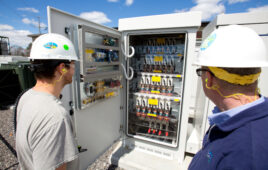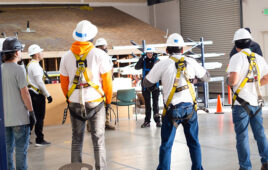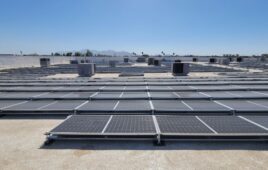By Becky Nace-Grover, Value Creation Executive, ProSight Specialty Insurance
The ongoing boom in community solar is shifting the role of solar providers from one-off residential or commercial projects to something that more closely resembles a traditional utility company. This changing role makes it important for providers of community solar to emphasize proper installation and inspection vs. rush-installing systems to take advantage of end-of-year tax credits.
Since community solar allows residents in a neighborhood or municipality to pay into a “shared” solar system in return for green energy and a credit on their utility bills, community solar managers need to be vigilant in reviewing recently-built systems. If a system isn’t properly inspected and the power goes down as a result, the go-to solar “utility” risks the collective wrath of thousands of customers — not to mention the angry calls they could get from municipalities themselves.
That’s why it makes good sense to conduct a thorough inspection post-installation to check for any potential issues — and correct them before they become full-blown problems.
Here are a few suggestions that community system owners and asset managers should look for as part of their system inspection checklist:
- Compare original system specifications to how the system was ultimately built. Ask yourself these questions: What, if anything, has changed from the original design? Are different components being used? What is the system output? In many cases, a third-party engineer does the initial design, then separate contractors do the actual installation. As with any construction project, unforeseen obstacles could crop up that require alterations on the fly. If this happens, make sure you’re aware of the changes and document them “as built” with an explanation as to the reasons why.
- Use a drone to check for equipment damage, like modules with broken cells or lower-than-expected system output. Drone or aerial inspections are a cost-effective way to help detect this type of damage and are typically more reliable than ground inspections by workers in the field. Certain types of drones also employ infrared technology, which can detect if a module, or part of one, isn’t producing power. This is an extremely critical function with newly-installed systems since no historical data exists to compare what the correct output should be.
- Check all components, making sure modules and racking are tied in properly without any loose or missing screws. Ensure that electrical components are properly grounded, as well. These are areas where shortcuts might be taken if an installation is being rushed.
- Make sure wires are secured by staples, cable ties, hangers or similar fittings. Then, ensure all wiring is properly protected to prevent squirrels or other animals from nibbling on them, which can cause damage and even make entire systems go offline. Clearly label all components with permanent, weather-resistant signage that will not wear away when exposed to the elements. Careful signage and neat wire management make further inspections easier — and are indicators of an above-average system. Of course, it also makes sense to install a fence around your community solar array to keep it protected from the public.
While it may be financially advantageous to get community solar systems up and running for tax purposes, providers shouldn’t sacrifice proper installation practices and safety oversight. By employing a post-installation inspection (and not rushing end-of-year installs in the first place), community solar providers can start 2020 on a sunny note — and embrace their developing role as a customer-facing “utility.”
 Becky Nace-Grover oversees ProSight’s marine contractors, federal contractors and solar contractors niches and distribution partners. She has over seven years of industry experience which includes time as a property and casualty underwriter at GCube Insurance Services. Rebecca graduated from the College of Charleston with a bachelor’s degree in Psychology and earned her Property and Casualty Broker License for New York and New Jersey.
Becky Nace-Grover oversees ProSight’s marine contractors, federal contractors and solar contractors niches and distribution partners. She has over seven years of industry experience which includes time as a property and casualty underwriter at GCube Insurance Services. Rebecca graduated from the College of Charleston with a bachelor’s degree in Psychology and earned her Property and Casualty Broker License for New York and New Jersey.





The fact that solar work has been and is becoming more and more high voltage electrical work verifies that solar workers have little business doing solar at all. In Colorado recently the IBEW has taken legal action to keep unlicensed solar workers out of high voltage solar installations. And while this action may be twenty years tardy by the IBEW it is the right move. This legal action by the IBEW may damage the business of small time solar operators in Colorado but just because solar workers allowed themselves to be manipulated into obtaining a NABCEP certification does not make them qualified and trained high voltage electrical workers. In fact, all NABCEP and the solar industry does is extort and force American workers into paying expensive training and testing fees before they will even allow solar workers to have a job. In contrast the IBEW takes responsibility for training their union members and making sure they are qualified to take on both high and low voltage installations and projects. In that regard, the IBEW takes care of their union paying members as they should. NABCEP takes care of no one but the bank accounts of their board members.